
Carried to Mars beneath the Perseverance rover, the 4-lb. Ingenuity helicopter was deployed to the surface on April 4. The test site, in Jezero Crater, was named Wright Brothers Field in honor of the pioneering aviators Orville and Wilbur Wright, who made the first powered flight in 1903. The International Civil Aviation Organization also ceremonially designated the site JZRO—for Jezero Crater—and allocated the flight designator IGY-1 to the helicopter along with the call sign “Ingenuity.”
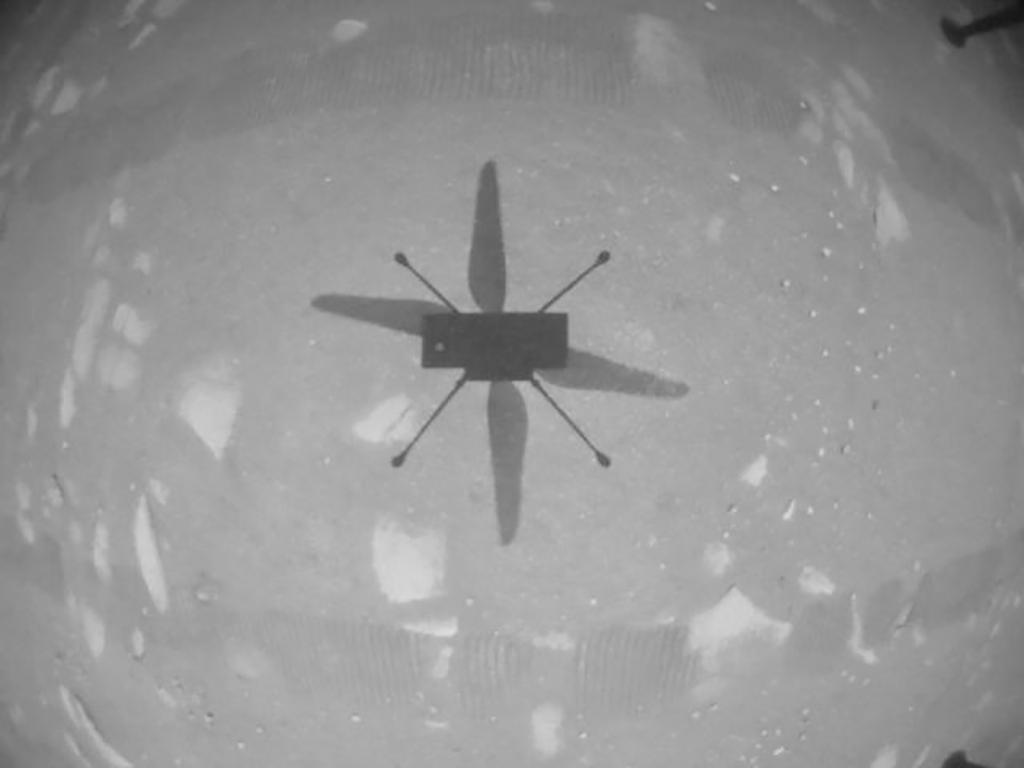
The first flight, which occurred at 12:33 Local Mean Solar Time (Mars time) on April 19, began with a vertical ascent into a hover at 10 ft. for 5 sec., followed by a 96-deg. clockwise turn to allow the helicopter’s onboard camera to point in the direction of the rover. Ingenuity maintained a stable hover in this position for a further 20 sec. before descending at 3.2 ft./sec. to land just inches away from its takeoff location. Images relayed from the helicopter’s downward-pointing navigation camera just prior to touchdown revealed one surprise: The rotors kicked up less dust than expected.
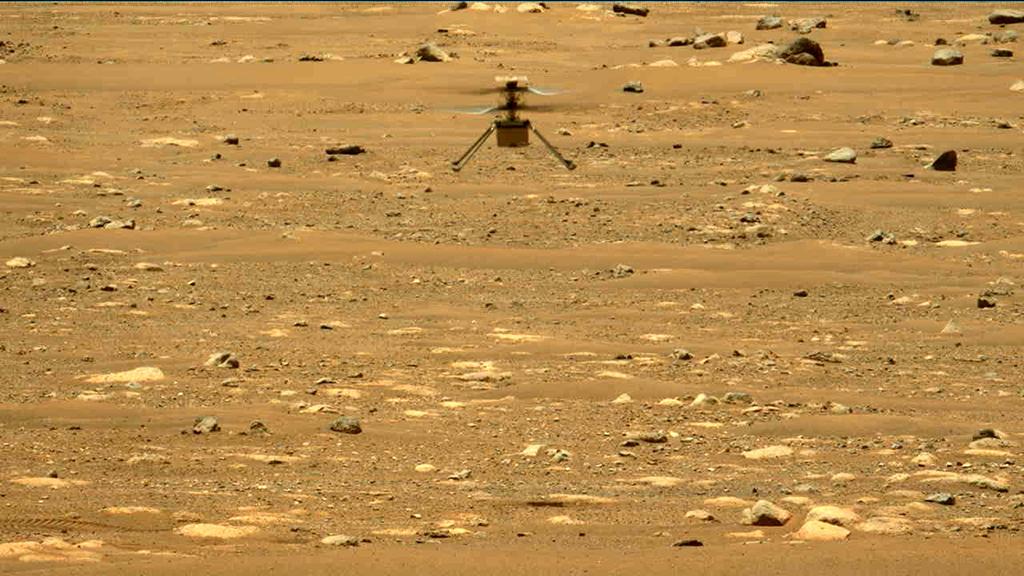
For its second flight test on April 22, Ingenuity climbed to 16 ft. and hovered briefly before executing a lateral maneuver. To perform this the flight control system commanded a 5-deg. tilt, allowing some of the thrust from the contrarotating rotors to accelerate the craft sideways for 7 ft. The 51.9-sec.-long flight forms part of a planned five-flight test program designed to push the edges of the rotorcraft’s performance envelope to its limits. The final flight, if executed as planned, could see Ingenuity fly to a site almost 2,000-ft. away from the rover before attempting to return.
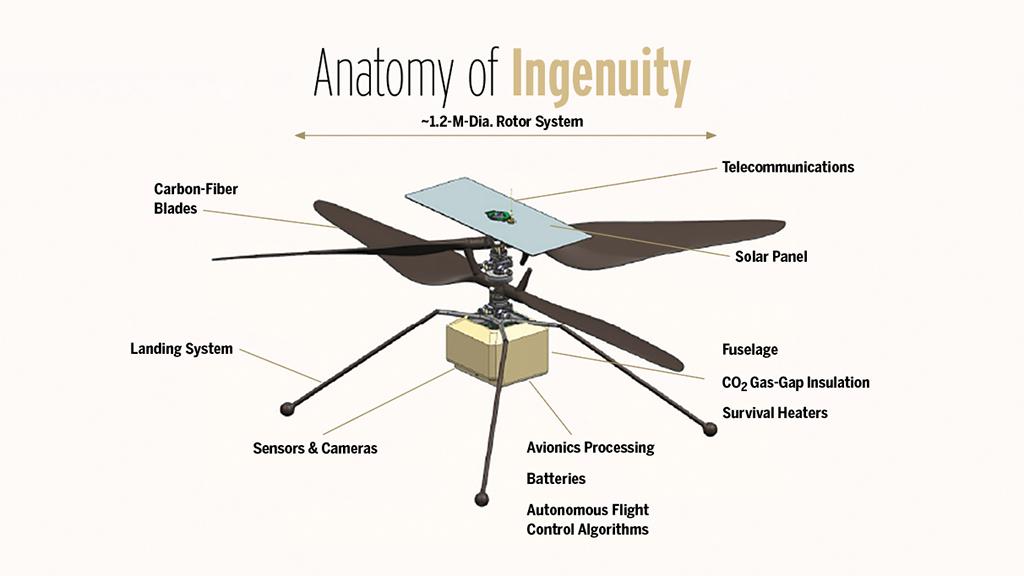
Designed purely for proving the concept of controlled flight in the thin Martian atmosphere, Ingenuity is a technology demonstrator and therefore carries no science payload. The coaxial 4-ft. rotor-diameter blades feature collective and cyclic control on both rotors and operate at a maximum speed of 2,800 rpm—compared to 400-500 rpm for small helicopters on Earth. Limited battery life means the helicopter is designed for just five flights—over 30 Mars days or sols—with a maximum endurance per flight of around 90 sec. Half the battery capacity, even when boosted by solar cells, is allocated to keeping Ingenuity warm during the frigid Martian nights.
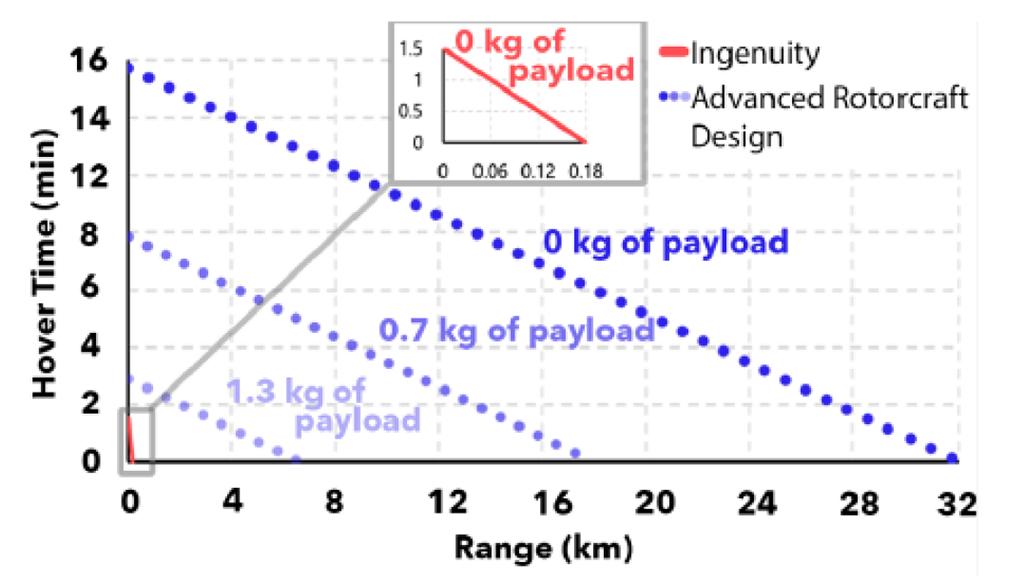
For a future mission NASA has studied various Mars Science Helicopter (MSH) concepts with optimized rotor designs that will enable a substantial increase in science payload capability, range and hover time. The huge increase in capability, seen in this payload-range chart, contrasts with the very limited performance of the first-generation Ingenuity rotorcraft (in red).

NASA’s MSH study with the Jet Propulsion Laboratory (JPL) and the agency’s Ames Research Center has developed three vehicle concept designs—one of which is a large hexacopter with a rotor diameter of 4.2 ft. and mass of around 44 lb. Multirotor designs with at least six rotors provide redundancy, enabling missions to be completed even if a rotor is damaged or a motor fails. Because of the thin Martian atmosphere designers have opted for controlling the rotorcraft using collective pitch rather than variable rpm—as used by small multirotors on Earth.
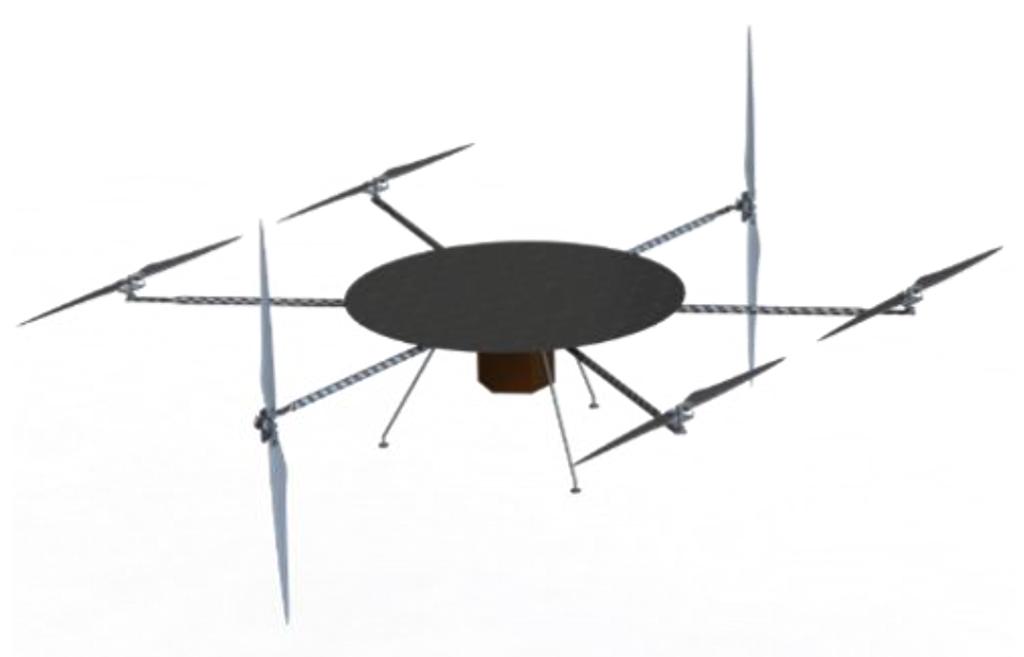
Although wings are not as useful on Mars as they are on Earth because of the low air density, a compound tiltrotor design including rotors, pushers, pullers and wings could still be a potentially viable candidate for longer-range science missions. The surface area of the wing could provide some lift as well as a bigger space for a larger solar panel. Thrust vectoring using the rotors could also allow use of simpler fixed-pitch rotors in place of the more complex collective mechanism of the multirotor.
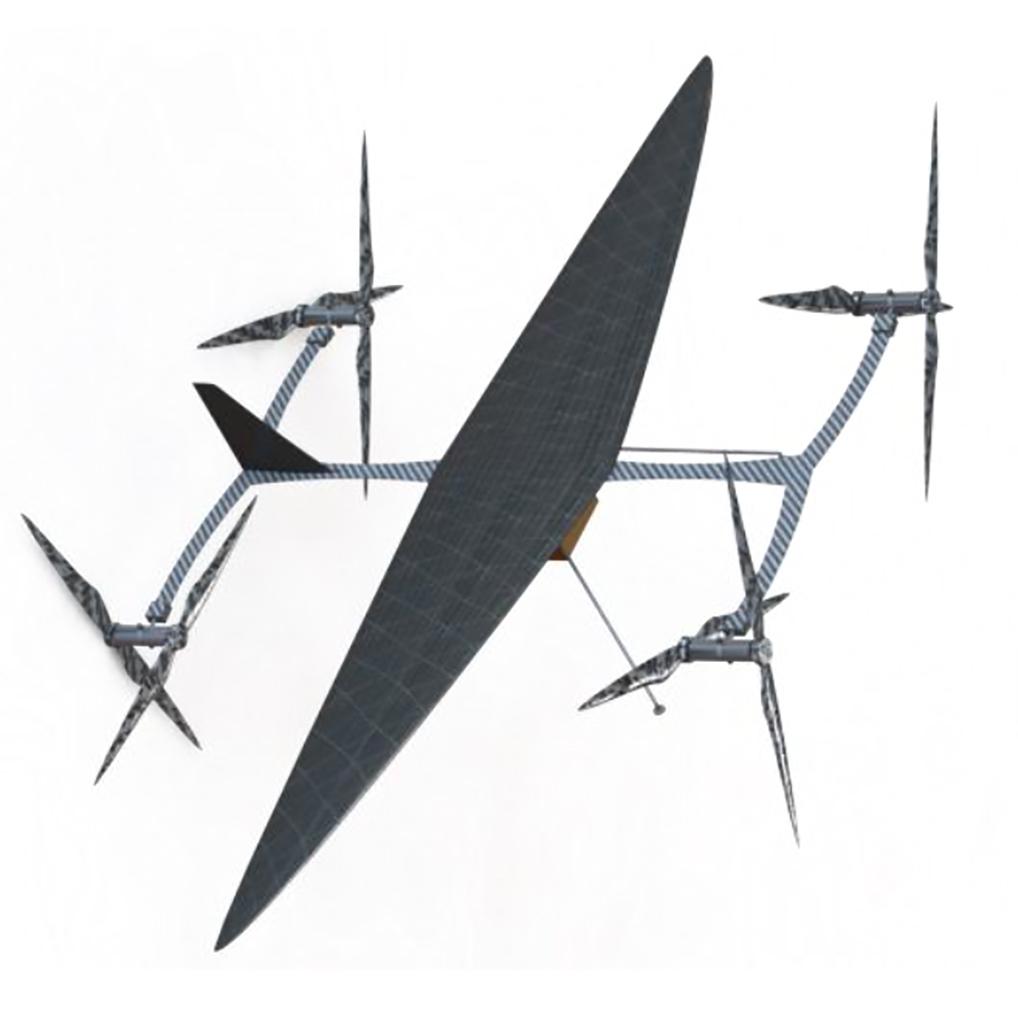
Another option under study for a future Mars vehicle is a coaxial tiltrotor that combines the idea of a winged craft and tilting rotors—capable of tilting at an angle between 0-90 deg.—with overlapping blades. The approach, which is similar to aspects of the Ingenuity coaxial configuration, offers added redundancy and antitorque benefits but poses a challenge for packaging in the delivery spacecraft as well as for mass.
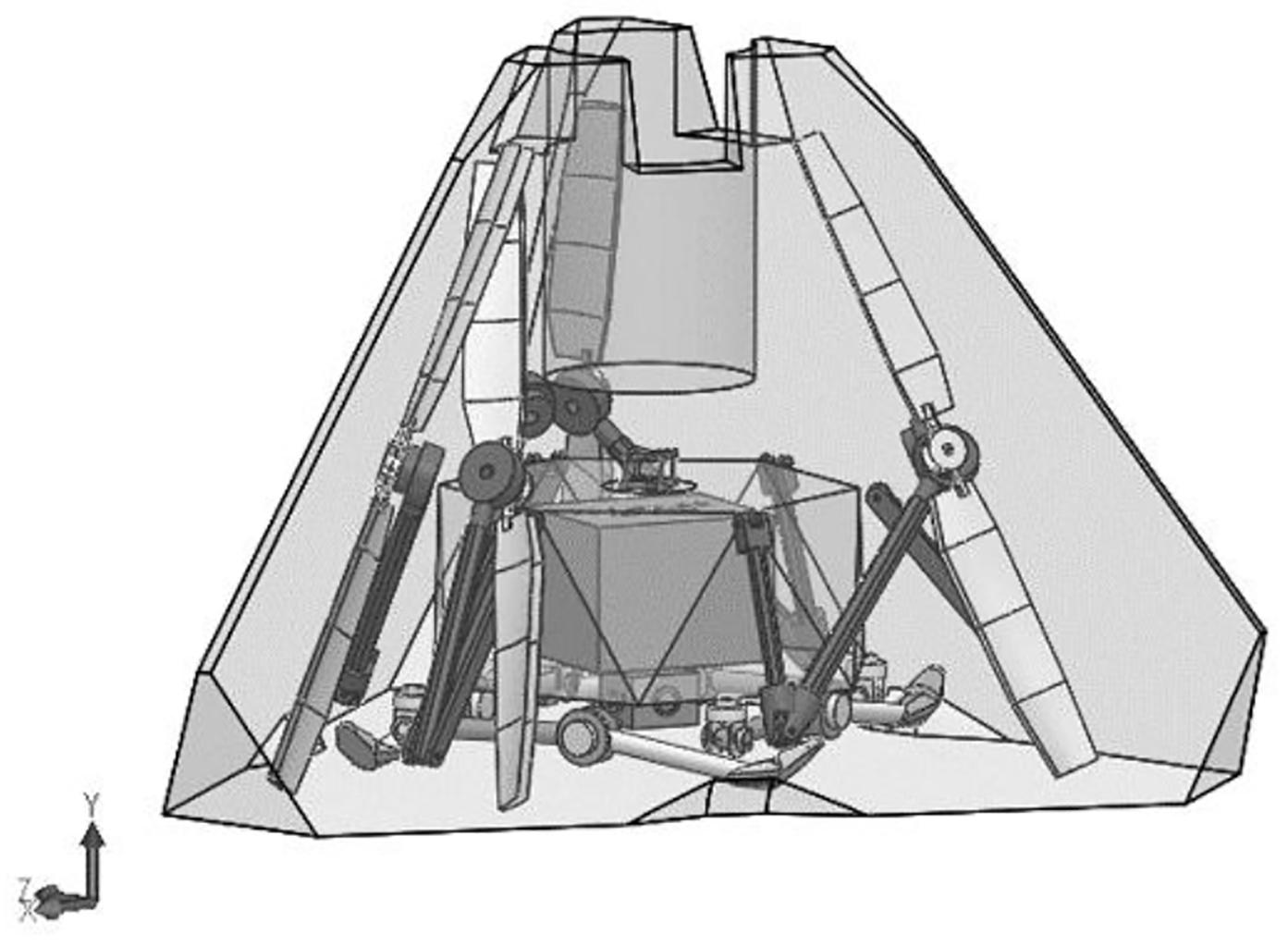
Getting the vehicle to the surface of Mars will require ingenious packaging concepts such as this MSH hexacopter storage design. With arms and rotors folded origami-like into the aeroshell, the vehicle would be deployed by extending its elements either by linear—or telescoping—motions, or by unfolding uses hinged sections.
NASA’s Ingenuity Mars Helicopter achieved a breakthrough for space exploration on April 19 when it hovered successfully over a site close to the Perseverance rover, marking the first time a vehicle has performed a powered, controlled flight on another planet. The short flight test effort aims to prove rotorcraft and other aircraft types could play a key role in future planetary exploration, surveying and collecting samples from areas inaccessible by other means. Encouraged by Ingenuity’s success to date, NASA is already designing follow-on vehicles.
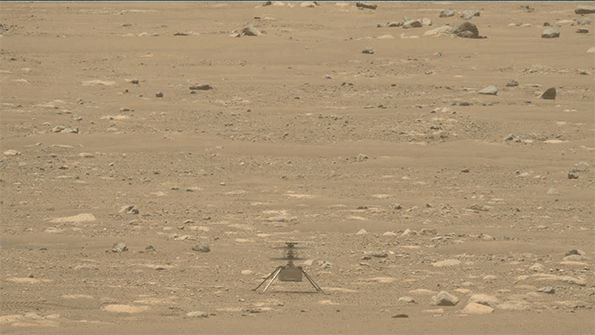
Credit: NASA/JPL-Caltech
